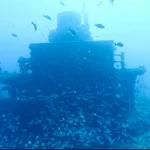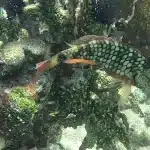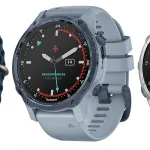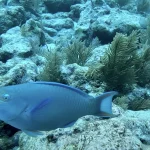USS Spiegel Grove: What Divers Need to Know
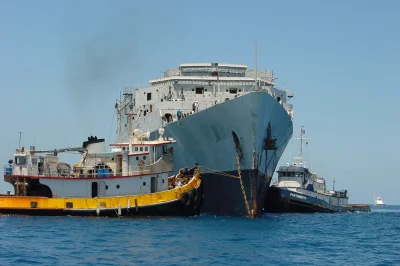
Table of Contents
- USS Spiegel Grove: What Divers Need to Know
- Exploring Current Penetration Routes Safely
- Marine Life You Can’t Miss
- Misconceptions About Diving USS Spiegel Grove
- Avoiding Common Diving Mistakes
- Conservation Efforts and Their Impact
- Key Largo’s Marine Life: A Statistical Overview
- Upcoming Trends in Wreck Diving
Introduction
This blog post provides scuba diving enthusiasts with the latest updates on the USS Spiegel Grove and the vibrant marine life surrounding Key Largo as of May 2025. We delve into what makes this destination a must-visit for divers, offering insights into current conditions, marine biodiversity, and practical diving tips.
USS Spiegel Grove: What Divers Need to Know
Spiegel Grove Wreck Diving Routes and Guides (May 2025)
The Spiegel Grove, a 500-foot artificial reef, is renowned for its challenging dive conditions, ideal for advanced divers. With depths from 65 to 130 feet, it offers a unique underwater experience showcasing marine life and the wreck structure. Divers need at least an Advanced Open Water certification and a thorough logbook demonstrating air management and experience in overhead environments.
Key Routes and Maps
Reef Smart Guides provides a detailed deck plan that aids divers in navigating the Spiegel Grove. This resource includes:
- Suggested routes for efficient exploration of various wreck sections.
- Focus areas: Deep zones (around 130 feet) for observing the hull, and shallower sections (approximately 65 feet) for the superstructure.
- Caution zones: Avoid openings below 90 feet to stay safe, especially in less-explored, potentially hazardous areas.
Guided Dive Recommendations
For optimal safety and enjoyment, diving with experienced guides is advisable. Notable operators include:
- Rainbow Reef Divers: Known for their dedication to safety and understanding of local conditions, offering guided dive experiences.
- Daily Operators: Ensure adherence to strict certification protocols, especially in overhead environments, where Cavern Diver certification might be required.
Pre-Dive Preparations
- Carry certification proof, as Advanced Open Water status verification is required by operators.
- Prepare for a logbook review to showcase prior experience and air management skills.
- Bring full technical dive gear for deeper penetrations and wreck exploration, as conditions vary.
Booking Tips for May 2025
- Seek promotional rates, such as a 20% discount for trips booked online from May 1–8, 2025.
- Check current conditions with local operators; strong currents may affect dive plans.
Considering these factors will ensure a safe and rewarding experience when diving the Spiegel Grove.
Exploring Current Penetration Routes Safely
Marine Life in Key Largo: Key Species and Habitats
Key Largo’s diverse marine ecosystems support a rich variety of species, particularly in coral reefs, mangroves, and offshore waters. Below is a detailed overview of notable species, their habitats, and conservation efforts.
Key Marine Species
- Loggerhead Sea Turtles
Common in the Florida Keys, recognised by their large heads and long lifespans. They inhabit coastal and reef areas, feeding on crustaceans and jellyfish.
- Midnight Parrotfish
Essential to reef health, consuming algae to prevent overgrowth and protect corals. Protected under Florida Fish and Wildlife Commission (FWC) regulations.
- French Angelfish
Recognisable by their striking colours, feeding on sponges, corals, and algae. They inhabit coral reefs and rocky structures in the Florida Keys National Marine Sanctuary.
- Green Moray Eels
Often seen in reef crevices, appearing green due to a yellow mucus layer. They coexist with various moray species, maintaining reef health.
- Snappers and Groupers
- Yellowtail Snapper: Abundant near reefs, this species contributes to both marine ecosystems and local fisheries.
- Grouper: Essential to reef systems, feeding on smaller fish and invertebrates, helping to maintain balance.
Habitats and Diving Areas
Diving spots around Key Largo include coral reefs, artificial reefs, and mangroves, offering a chance to observe various marine species. Shipwrecks like the USS Spiegel Grove also create artificial reefs attracting numerous species.
Conservation Efforts
Conservation is vital in Key Largo, with regulations protecting marine species. The FWC enforces rules to maintain fish populations, ensuring marine ecosystem health for future generations.
Best Diving Tips
When diving in Key Largo, consider visiting dive shops with experienced guides who can enhance your understanding of marine life. Prioritise safety, respect the underwater environment, and adhere to local conservation policies to preserve these habitats.
Marine Life You Can’t Miss
Misconceptions About Diving USS Spiegel Grove
Diving the USS Spiegel Grove is thrilling, yet several misconceptions can lead to unsafe practices. Understanding the realities of this site is crucial for ensuring safety and enjoyment.
1. Certification Requirements
Misconception: Open Water divers can dive the Spiegel Grove without restrictions.
Reality: Advanced Open Water certification is needed even for shallow exploration. Wreck Diver certification is essential for overhead environments.
2. Depth and Navigation
Misconception: The top deck is manageable for less-experienced divers.
Reality: Dive depths reach up to 135 feet, increasing risks of narcosis and poor visibility. Silt can reduce visibility significantly.
3. Wreck Penetration
Misconception: All advanced divers can freely access the decks.
Reality: Certified divers face restrictions, with operators prohibiting entry below 90 feet due to entanglement and narcosis risks.
4. Environmental Factors
Misconception: Currents do not impact conditions.
Reality: Significant currents necessitate staying low to the deck. Communication with dive crews is crucial for safety.
5. Dive Planning
Misconception: A single dive suffices to explore the wreck.
Reality: The 510-foot vessel requires multiple dives for full exploration. Divers should focus on specific areas and monitor gas consumption.
6. Post-Dive Hazards
Misconception: Safety stops are unnecessary due to shallow depths.
Reality: Rapid ascents from depths over 100 feet increase decompression sickness risk. Gradual ascents and safety stops are essential.
Addressing these misconceptions equips divers for a safer and more rewarding exploration of the Spiegel Grove.
Misconceptions About Diving USS Spiegel Grove
Common Diving Mistakes at Spiegel Grove
Diving at Spiegel Grove offers a unique opportunity due to its environments and marine life. However, common mistakes can jeopardise safety. Understanding these and taking precautions is crucial.
Safety Violations
- Ignoring Buddy Protocols: It’s crucial to stay with a dive buddy.
- Inadequate Safety Stops: Neglecting decompression stops can lead to decompression sickness.
- Overhead Environment Entry Without Training: Entering restricted areas without proper training can be dangerous.
Certification Oversights
- Attempting Advanced Dives Without Qualifications: Spiegel Grove is unsuitable for beginners.
- Ignoring Logbook Reviews: Operators often review logbooks for air management skills.
Environmental Misjudgment
- Underestimating Currents and Visibility: Strong currents and poor visibility can disorient divers.
- Overlooking Reef Dynamics: Environmental events can create unpredictable diving conditions.
Best Practices
- Stay within certification limits and avoid restricted zones.
- Utilise Surface Marker Buoys for safety during ascents.
- Review local guidelines for specific wreck diving protocols.
Being aware of these mistakes enhances safety and enjoyment while diving the Spiegel Grove.
Avoiding Common Diving Mistakes
Key Largo Diving Conservation Efforts in May 2025
Major Events
I.CARE Trash Derby (May 1–4, 2025): A large-scale cleanup from Key Largo to Key West targeting fishing gear, plastic, and reef debris through scuba diving/snorkeling and shore activities.
Last year’s event removed over 14,000 pounds of waste, highlighting the importance of community action.
Night Diving for Conservation: Evening dives provide insights into nocturnal species and behaviour, crucial for research. These dives are available year-round, making May ideal for participation.
Ongoing Efforts
Shallow Reef Diving & Conservation: Key Largo’s shallow reefs host diverse marine life, and dive operators often assist in coral restoration projects.
Responsible Practices:
- Buoyancy control preserves coral integrity.
- Mooring systems reduce anchor damage.
- Spring diving (March–May) offers optimal visibility, ideal for conservation-focused dives.
Future Opportunities
REEF Ocean Exploration Center Grand Opening (June 7–8, 2025): Featuring marine ecosystem and citizen science exhibits, contributing to conservation initiatives.
Engaging in the Trash Derby and participating in diving initiatives significantly impacts reef preservation.
Conservation Efforts and Their Impact
Marine Life Activity in Key Largo: May 2025 Update
In May 2025, Key Largo boasts a thriving marine ecosystem, crucial for divers and biodiversity. This vibrant life is influenced by fishing activity, environmental conditions, and conservation efforts.
Fishing Activity
Key Largo’s coastal waters have active fishing opportunities, notably in the Gulf and Everglades:
- Gulf Waters: Home to species like Spanish Mackerel, Kingfish, Cobia, and Sharks.
- Everglades: Known for Speckled Trout, Snook, Redfish, and various Snappers.
Red Tide Status
As of May 9, 2025, some Florida regions report red tide, but Key Largo remains unaffected.
Ecological Challenges
Key Largo faces ongoing challenges:
- Coral Decline: Rising temperatures and heat waves threaten coral health.
- Seagrass Die-Offs: These critical habitats are pressured by nutrient loads and development.
- Habitat Degradation: Vessel damage and propeller scarring hinder habitat sustainability.
Divers visiting in 2025 can experience an active and vibrant underwater environment supported by conservation efforts.
Key Largo’s Marine Life: A Statistical Overview
Current Dive Conditions (May 2025)
Conditions at the USS Spiegel Grove in early May 2025 are:
- Wind: Southeast at 20 knots (May 10, 2025)
- Waves: 4 feet
- Visibility: Generally good, reports of “blue” water conditions notwithstanding currents
Divers should monitor updates, as coastal conditions can change daily, drawing from past experiences to manage the current scenarios.
Penetration Routes
The 510-foot wreck offers a variety of pathways:
- LCAC Bay: Accessible through cut openings, exploring its sizable interior.
- Helipad and Superstructure: Reachable through designated entry points.
- Cargo Holds: Navigate through corridors connecting ship sections.
Safety Notes:
- Depth: Ranges from 45 ft (bow) to 130 ft (stern), necessitating advanced certifications for deeper dives.
- Currents: Monitoring is essential due to potential strong currents.
Marine Life
The Spiegel Grove hosts a diverse ecosystem:
- Large predators: Groupers, snappers, and moray eels.
- Small fish: Parrotfish, angelfish, and bannerfish.
- Invertebrates: Sea fans, corals, and crustaceans.
Local insights indicate challenging but manageable conditions, with sightings of diverse marine life. Divers should consult local operators for up-to-date information on marine biodiversity.
Upcoming Trends in Wreck Diving
General Diving Context
The USS Spiegel Grove rests at 130 feet near Key Largo, Florida, making it perfect for advanced divers. The wreck is 510 feet long and features multiple compartments, including a helipad and LCAC bay.
Key Factors to Consider
- Visibility: Varies depending on currents and weather.
- Wave Heights: Typically range due to wind and storms.
- Currents: Can affect navigation; buoys provide reliable mooring.
Recommendations
Consult local operators like Tropical Odyssey for real-time conditions. Monitor wind and wave forecasts, particularly for potential hurricane or storm effects on the wreck’s stability. The Spiegel Grove remains a significant artificial reef, attracting diverse marine life, making it a top destination for divers.
Sources
- Rainbow Reef – Spiegel Grove Wreck Diving
- Florida Keys – Diving Spiegel Grove
- Reef Smart Guides – Spiegel Grove Deck Plan
- Diving Site – USS Spiegel Grove
- TripAdvisor – Spiegel Grove Reviews
- NOAA – Creature Feature
- NOAA – Florida Keys Fish and Wildlife
- FWC – Marine Life Regulations

